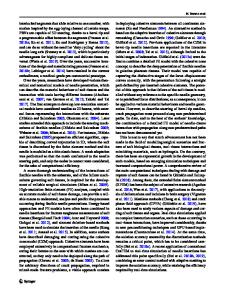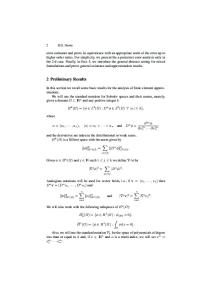Bayesian Finite Element Model Updating
In this chapter, the implementation of the reduced-order models within Bayesian finite element model updating is explored. The Bayesian framework for model parameter estimation, model selection, and robust predictions of output quantities of interest is f
- PDF / 2,062,513 Bytes
- 49 Pages / 439.37 x 666.142 pts Page_size
- 55 Downloads / 395 Views
Bayesian Finite Element Model Updating
Abstract In this chapter, the implementation of the reduced-order models within Bayesian finite element model updating is explored. The Bayesian framework for model parameter estimation, model selection, and robust predictions of output quantities of interest is first presented. Bayesian asymptotic approximations and sampling algorithms are then outlined. The framework is implemented for updating linear and nonlinear finite element models in structural dynamics using vibration measurements consisting of either identified modal frequencies or measured response time histories. For asymptotic approximations based on modal properties, the formulation for the posterior distribution is presented with respect to the modal properties of the reduced-order model. In addition, analytical expressions for the required gradients with respect to the model parameters are provided using adjoint methods. Two applications demonstrate that drastic reductions in computational demands can be achieved without compromising the accuracy of the model updating results. In the first application, a high-fidelity linear finite element model of a full-scale bridge with hundreds of thousands of degrees-of-freedom (DOFs) is updated using experimentally identified modal properties. In the second application, a nonlinear model of a base-isolated building is updated using acceleration response time histories.
7.1 Motivation Probability distributions are often used to quantify uncertainties, and probability calculus is employed to propagate these uncertainties through the computational model of a structure in order to make prior robust predictions of output quantities of interest (QoI). To improve the mathematical models and the probability models of uncertainties of both the system and loads, one can exploit the valuable information contained in measured data collected from system component tests or system operation through monitoring. The resulting data-driven updated model, when used for simulations, yields updated or posterior robust predictions, constituting improved and more reliable estimates of the system performance. However, the computational science tools for handling uncertainties in simulations based on test/monitoring data are conceptually and computationally much more challenging than conventional computing tools © Springer Nature Switzerland AG 2019 H. Jensen and C. Papadimitriou, Sub-structure Coupling for Dynamic Analysis, Lecture Notes in Applied and Computational Mechanics 89, https://doi.org/10.1007/978-3-030-12819-7_7
179
180
7 Bayesian Finite Element Model Updating
[48]. This chapter presents a comprehensive Bayesian probabilistic framework for uncertainty quantification and propagation (UQ+P) in complex structural dynamics simulations based on test data. Bayesian analysis [13, 15, 64] is used as the logical and computational framework for combining knowledge from test/monitoring data and models in a consistent way. The Bayesian framework exploits the available measured data and any
Data Loading...











